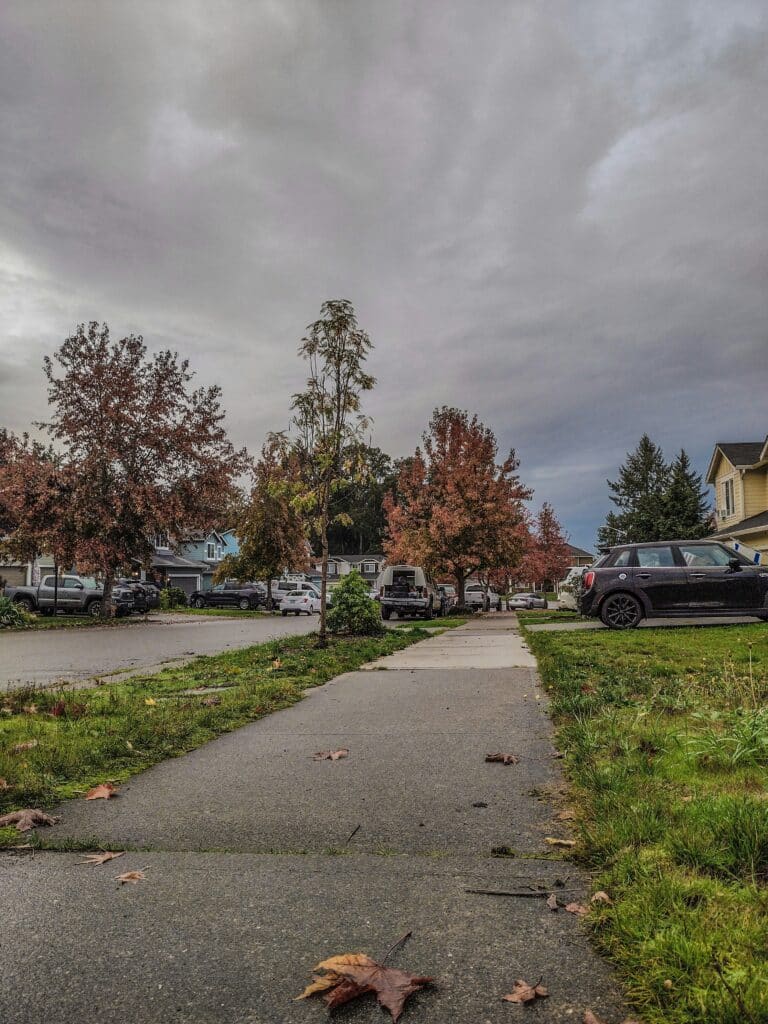On This Page
Your Property: It’s smaller than you think!
Have you ever been driving in a neighbourhood and noticed a strip of grass between the sidewalk and the road? I’m sure you’ve probably wondered, “Who owns that patch of grass?”.
Maybe you’ve had some extra undeveloped land that seems to be part of your property. For an unknown reason, the developers that built your house chose not to capitalize on it. Have you looked at a survey of your property, and thought “It sure is a lot smaller than it looks.”?
All these scenarios are manifestations of a Road Allowance.

What is A Road Allowance?
A Road Allowance is a strip of land reserved for the Government by a Crown Surveyor, for the purposes of servicing lots within a concession.
To explain that in some easier to understand terms, we must first explore a brief history of Surveying in Ontario.
Crown Surveyors were responsible for the division of Ontario into sections of land. The first task of the surveyor would be to divide a part of land into a Township. A Township was further divided into concessions, and finally, lots. Lots could be either 200 or 100 acres in size, depending on the division system used.
Originally, 200 acre lots made up a Single Front Township. Eventually, surveyors switched to the Double Front configuration, comprised of 100 acre lots.
In some areas of Ontario, the legal description may still in fact read “Part of Lot X” – meaning it is a division of that lot.
The unit of measurement of these lots was a chain. This chain was 100 links, and measured 66 feet in length. A road allowance would go between concessions, or groups of lots, for the purposes of access and service of those lots.

Surveyors would also incorporate Shore Road allowances. These allowances weren’t for traveling. Instead, they existed for easy transport of lumber out of large logging operations. They also proved useful in cottage country, providing access for fire crews in the event of an emergency. These were known as Shore Road Allowances.
Road Allowance Vs Right of Way
A Road Allowance is not a Right of Way. A Road Allowance is an unused Government-owned strip of property. A Right of Way is the Right for a non-owner to pass over land that belongs to you. A Right of way is a type of Easement. More information on Easements can be found in our Easement Guide.
The simplest way to differentiate the two is to ask the question, “Who’s Permission?”
Is the Government (passively) giving you permission to have your lawn on their land? That’s a Road Allowance.
Would the Government (or other body) need permission to pass over your land? That’s a Right of Way.
Why the Road Allowance Matters Today
Road Allowances likely don’t impact property owners as significantly as they may did when land was first surveyed. Most municipalities have established by-laws that clarify how far the City can go with these rights. Rarely does the governing body decide to re-engineer a residential street.
Yet, there are some important facts to keep in mind about how a Road Allowance might affect you and your next property.
Your Property is Smaller than You Think
You might have an extensive front yard with an excessive amount of green space. It’s important to note that, despite its appearance, the amount of land you actually own could be far less. In the event the city ever wanted to exercise its allowance, your property could be left looking lacking of greenery.
City Zoning by-laws usually limit the total floor area of a house by a proportion of the lot area. The lot size used in this calculation is the amount you actually own; not the amount you measure in your yard.
A massive road allowance could mean your renovation is limited a lot more than you may think. Trying to erect a front fence? Make sure its not in a spot where the city could order it taken down.
If you’re unsure of the boundaries, you should have a survey completed of your property. Looks can be deceiving!
The City is Still In Charge of landscaping
For the most part, the City owning the unused portion of the allowance overlooks minor landscaping changes. Homeowners can plant a tree or re-sod the area without much qualm from the City.
If you have a large tree located on this property, the City could decide to remove it one day, resulting in a barren-looking yard.
However, this can work to your advantage in some locations. For example, in Toronto, you can call 311 and ask for the city to consider planting a tree on your allowance – free of charge!
Road Allowances Always Exist Unless Closed
This last point affects cottage-owners more than city-dwellers. Unless the city or township has closed the road allowance, the right for them to exercise this allowance always exists. This is important especially with Shore Road Allowances. Failure to do proper research before buying a cottage could lead to a lakefront property, where your dock is across the street.
Still have questions about Road Allowances, or want to speak with a lawyer about your rights in an allowance? Contact Us today for a free consultation of your Real Estate and Legal needs.

Hi Baron:
I have a property in Bethany Ontario that adjoins a fire route. The survey of my property shows a road allowance adjacent to the fire route. The municipality seems to have a problem identifying how wide this road allowance. Apparently neither the fire department nor the planning office can come up with an official reference for the width of the road allowance. According to your article all road allowances are 1 Link and therefore 66 feet. wide. Can you provide the reference for your article so I can enlighten the municipality.
Thank you